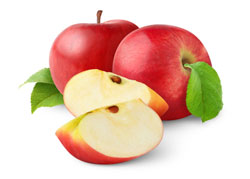Good health benefits here
Hello friends me aapko is blog pr health article dunga. Ager aapko health se related kuch Janna ho toh comment kre. Me usi din ya uske agle din aapko sari detail de dunga.
Tuesday, 3 September 2019
Health Benefits of Fruits and Vegetables 2
Diets high in fruits and vegetables are widely recommended for their health-promoting properties. Fruits and vegetables have historically held a place in dietary guidance because of their concentrations of vitamins, especially vitamins C and A; minerals, especially electrolytes; and more recently phytochemicals, especially antioxidants. Additionally, fruits and vegetables are recommended as a source of dietary fiber.
Most countries have dietary recommendations that include fruits and vegetables. Table 1 summarizes the recommendations for 3 countries: Canada (1), the United Kingdom (2), and the United States (3). Although dietary recommendations have many similarities, different countries choose different strategies to separate fruits and vegetables into groups. Orange fruits and vegetables are often high in carotenoids and are placed in a separate category. Yet many dark green vegetables (i.e., spinach) are also high in carotenoids. Dividing fruit and vegetables into color categories makes sense for menu planning but does not correspond with nutrient content.
Certain fruits and vegetables are rich sources of vitamin C, but these rich sources (citrus fruits, strawberries, green peppers, white potatoes) are spread over many fruit and vegetable categories. Other fruits and vegetables, including avocado, corn, potatoes, and dried beans, are rich in starch, whereas sweet potatoes are mostly sucrose, not starch. Fruits (except bananas) and dark green vegetables contain little or no starch. Often, dietary guidance rules place fruit juices and potatoes in separate categories, because of dietary directives to eat whole fruits and minimize consumption of foods high in fat and sodium, i.e., French fries. The vegetable and fruit categories in the 2010 Dietary Guidelines for Americans (3) are listed in Table 2. These categories are important, because they drive policy for programs such as school lunch and other supplemental feeding programs.
According to the Dietary Guidelines for Americans 2010, nutrients of concern in the American diet include potassium, dietary fiber, calcium, and vitamin D. Energy density and intake are also important issues in the American diet. Fruits and vegetables are generally low in energy density and often are good sources of fiber and potassium, but the nutritional contribution of standard servings of fruits and vegetables varies widely (4). The content of phytochemicals, such as polyphenolics, also varies greatly (5) and is not listed in nutrient databases.
We have provided a nutritional comparison of the 10 most commonly consumed fruits and vegetables (Table 3). It should be noted that fruits and vegetables are often not consumed in the raw form but may be cooked, fried, or combined with other ingredients prior to consumption. Thus, whereas a boiled potato is a nutrient-dense food, a fried potato may contribute a substantial amount of fat and sodium to the diet. Fiber concentrations range from 0.6 to 5.1 g/serving and potassium concentrations range from 76 to 468 mg/serving (Table 3). Bananas and potatoes, although technically belonging to different families, have strikingly similar compositions for energy, fiber, and potassium per standard serving. A standard serving of iceberg lettuce contains 8 kcal, whereas a potato contains 144 kcal and a banana 105 kcal. Of course, iceberg lettuce is seldom eaten alone.
Most estimates of fruit and vegetable consumption are limited by disagreement on what constitutes a serving of a fruit or vegetable. Mean fruit and vegetable intakes (servings/d) are 5.16 servings (Canada), 3.5 portions (men); 3.8 portions (women) (UK) and 4.7 servings (US) (Table 1). Marriott et al. (6) examined intake of carbohydrates, including dietary fiber, in the NHANES data set. Dietary fiber intake was particularly low in their analysis. With the exception of older women (≥51 y), only 0–5% of individuals in all other life stage groups had fiber intakes meeting or exceeding the Adequate Intake (AI)4. Common serving sizes of fruits and vegetables contain 1–5 g of fiber. Most of the fiber in vegetables and fruits is insoluble fiber, except for citrus fruits.
Health Benefits of Fruits and Vegetables 1
Fruits and vegetables are universally promoted as healthy. The Dietary Guidelines for Americans 2010 recommend you make one-half of your plate fruits and vegetables. Myplate.gov also supports that one-half the plate should be fruits and vegetables.
Fruits and vegetables include a diverse group of plant foods that vary greatly in content of energy and nutrients. Additionally, fruits and vegetables supply dietary fiber, and fiber intake is linked to lower incidence of cardiovascular disease and obesity. Fruits and vegetables also supply vitamins and minerals to the diet and are sources of phytochemicals that function as antioxidants, phytoestrogens, and antiinflammatory agents and through other protective mechanisms.
In this review, we describe the existing dietary guidance on intake of fruits and vegetables. We also review attempts to characterize fruits and vegetables into groups based on similar chemical structures and functions. Differences among fruits and vegetables in nutrient composition are detailed.
We summarize the epidemiological and clinical studies on the health benefits of fruits and vegetables. Finally, we discuss the role of fiber in fruits and vegetables in disease prevention.
Monday, 2 September 2019
Health and Fitness Articles
Being healthy and fit in simple terms means taking good care of the body. We should remember that a healthy mind resides only in a healthy body. Good health of both mind and body helps one maintain the required energy level to achieve success in life. All of us must strive to achieve wholesome health.
Protecting your body from the intake of harmful substances, doing regular exercises, having proper food and sleep are some of the important instances that define a healthy lifestyle. Being fit allows us to perform our activities without being lethargic, restless or tired.
A healthy and fit person is capable of living the life to the fullest, without any major medical or physical issues. Being healthy is not only related to the physical well-being of a person, it also involves the mental stability or the internal peace of a person.
Generally, a healthy diet consists of taking a proper and healthy food which includes eating green and fresh vegetables, fruits, having milk, eggs, minerals, proteins and vitamins essential for a human’s lifestyle. Practicing Yoga including regular exercises in your daily routine also help you maintain your desired fitness, blood sugar and immunity level.
Healthy habits improve your physical appearance, mental stability, ability to perform activities in a better way, which help you lead a stress-free lifestyle, maintaining happy moods, high energy levels, etc. Each individual should take of one’s health on a priority; no single day should be skipped for making efforts on maintaining physical and mental fitness. Being happy is directly related to boosting your mental strength and health, so happiness can be considered as the result as well as the part of a healthy and fit lifestyle.
Conclusion: Health is the most important thing that a person should take care of. Leading a healthy lifestyle leads to happiness, success and achievements.
Subscribe to:
Posts (Atom)
The health benefits of popular foods 1
Almonds Almonds are a rich source of vitamin E, copper , magnesium , good quality protein, and healthy unsaturated fatty acids. S...








